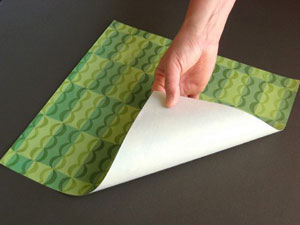 Susan Scott designs and prints her own fabric then turns it into bookcloth that she sells in her Yardwork Etsy shop. (She also sells books covered with her fabric.) In her Etsy profile, she explains her printing process and says this about making bookcloth:
Susan Scott designs and prints her own fabric then turns it into bookcloth that she sells in her Yardwork Etsy shop. (She also sells books covered with her fabric.) In her Etsy profile, she explains her printing process and says this about making bookcloth:
To begin with, the time-honored glue of choice, wheat paste, must be mixed with water and cooked either in a microwave or on the stove. The printed, dyed and washed fabric is then stretched out onto a pane of glass. A thin layer of acid-free wheat paste is brushed over the damp fabric and a very thin sheet of Japanese Mulberry paper, which is cut larger than the fabric, is carefully placed over it. The paper becomes very wet from the wheat paste and can be rolled onto the fabric with a rubber brayer. I allow the fabric and paper to dry on the window frame for around 24 hours. When completely dry, the paper edges are cut away to reveal the fabric edge. The paper and fabric is then easily pulled away from the glass as one combined piece of bookcloth.

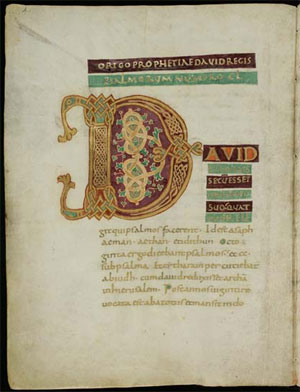
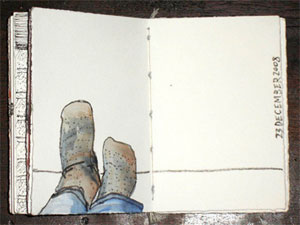
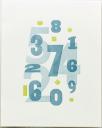
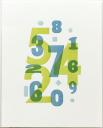
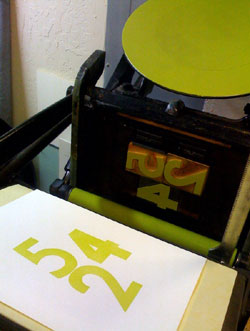

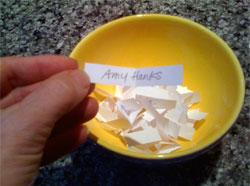 Wow! So many lovely and poetic comments about winter! Thanks to eveyone who entered — Amy Hanks is the winner of my book
Wow! So many lovely and poetic comments about winter! Thanks to eveyone who entered — Amy Hanks is the winner of my book